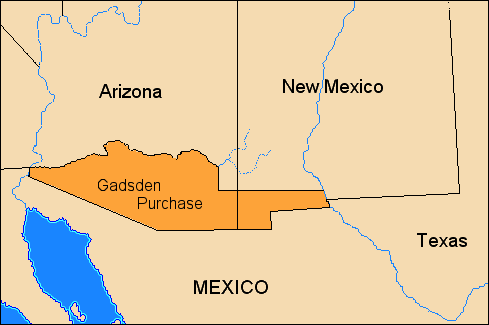

The southern border of the United States west of El Paso, Texas, would look far different than it does today if it weren't for the desire in the mid-1800s for a southern railroad route to the Pacific. Unfortunately, for those who dreamed of such an all-weather route, the country north of the border was far too rugged to make a railroad economically feasible. But to the south, in Mexico—that was another story.
Thanks to James Gadsden's friendship with Jefferson Davis, the U.S.
Secretary of War, Gadsden was named Minister to Mexico. His instructions, apparently
designed by Gadsden himself, were to buy enough land from Mexico to clear the way for
the railroad project. In 1852, a deal was struck with Mexico's Santa Anna. For
$10,000,000, the U.S. would get over 45,000 square miles of land—land making up what is
now southwestern New Mexico and southern Arizona. At about 33 cents per acre of
Chihuahuan and Sonoran desert and mountains, undoubtedly both Mexico and the U.S. would
agree that the Gadsden Purchase was a bargain for the U.S.

Listen to the Audio (mp3 format) as recorded by KTEP, Public Radio for the Southwest.
Contributor: Arthur H. Harris, Laboratory for Environmental Biology, Centennial Museum, University of Texas at El Paso.
Desert Diary is a joint production of the Centennial Museum and KTEP National Public Radio at the University of Texas at El Paso.

Map of Gadsden Purchase.